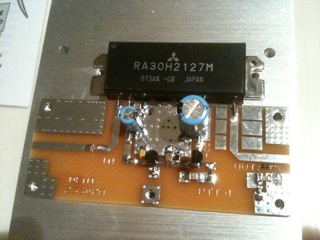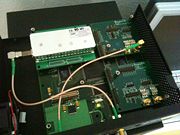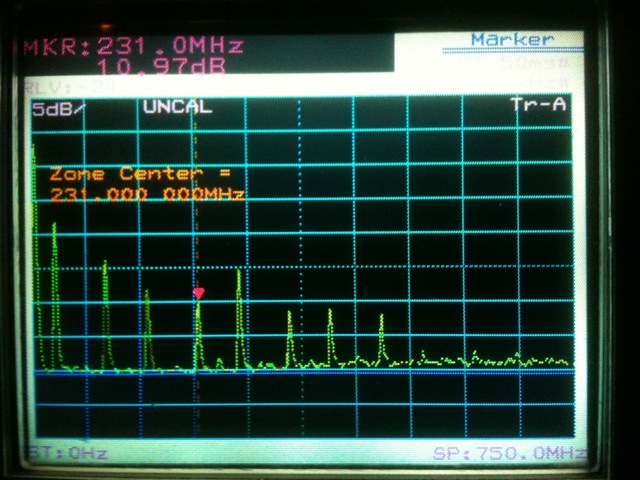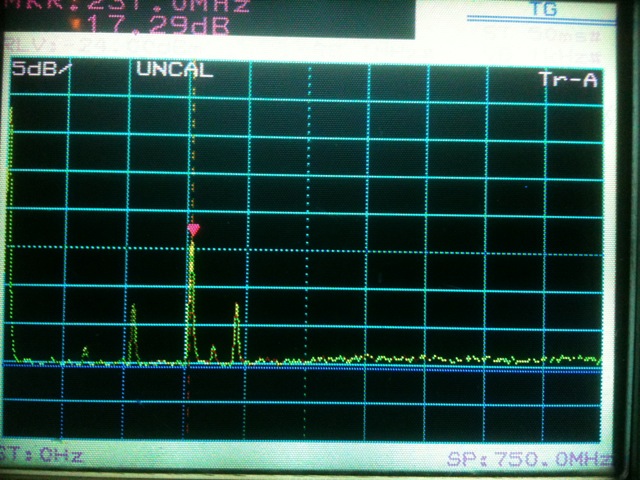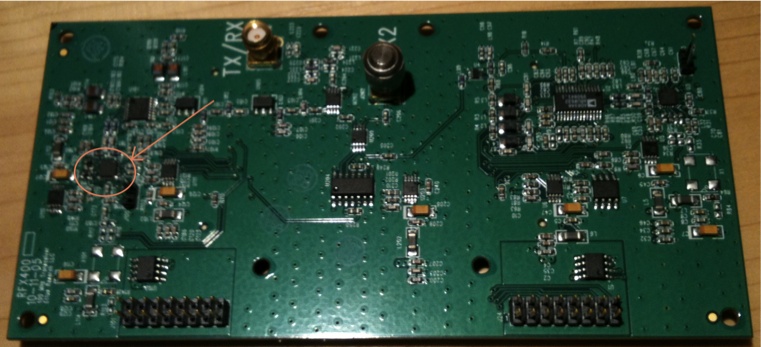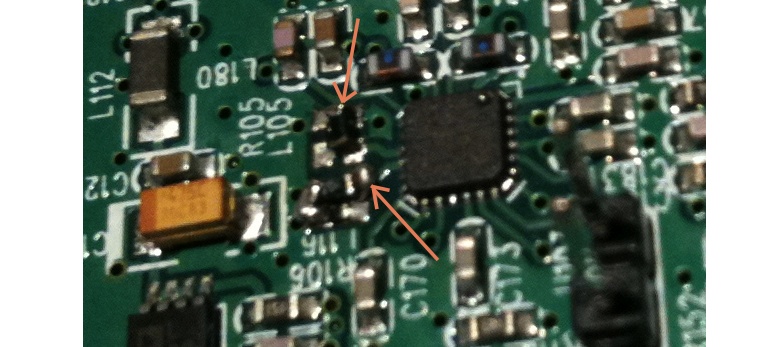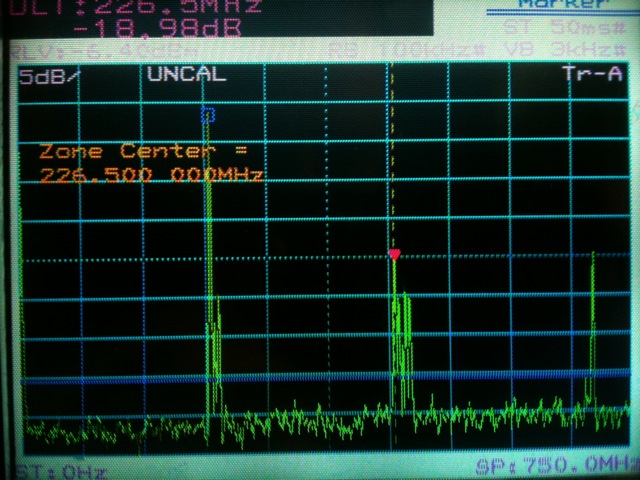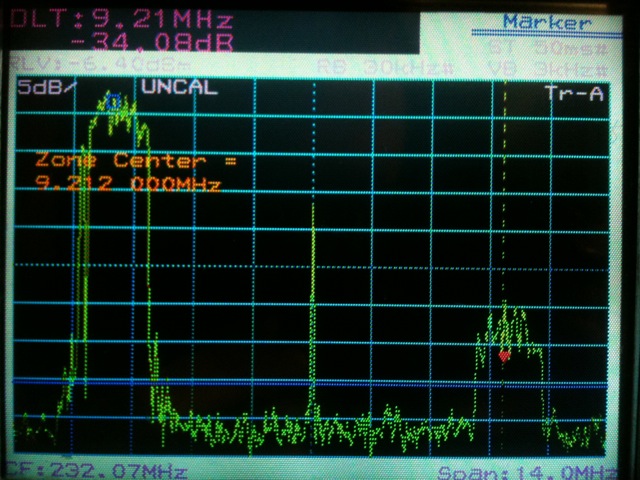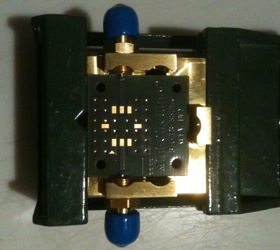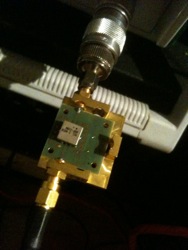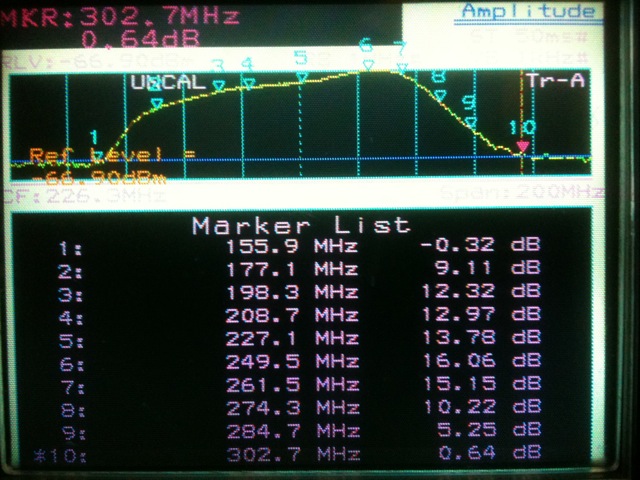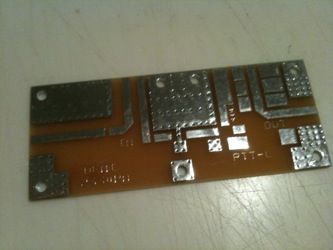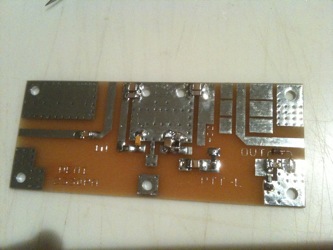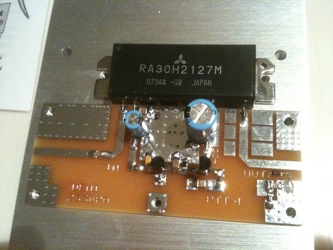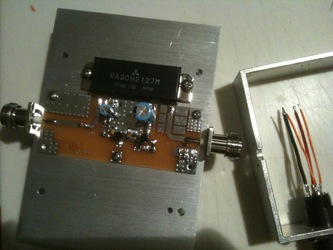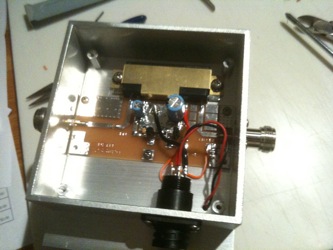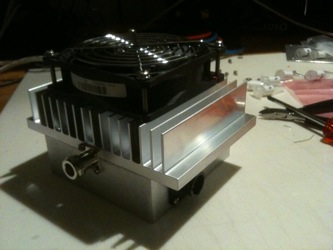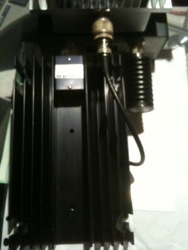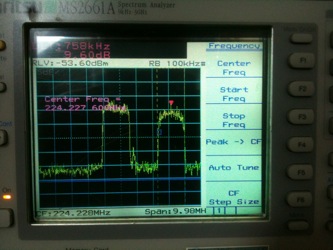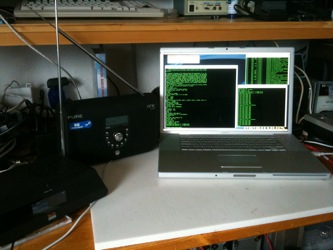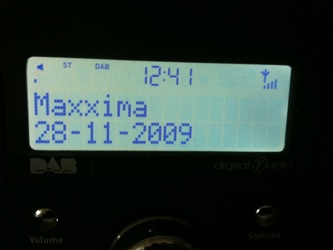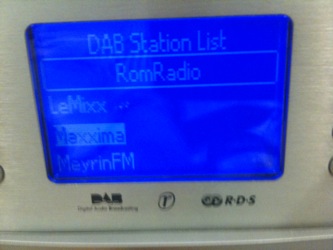Example of RF amplifier for DAB
(→RFX400) |
(→RFX400) |
Revision as of 22:27, 26 December 2009
Interesting ? Yes but... before thinking to use this kind of gizmo after the USRP, the RF signal need some manipulations, avoiding any disturbance on the radio spectrum.
NEVER CONNECT TO AN ANTENNA WITHOUT A LICENSE !
Contents |
Output Spectrum
Usually when somebody need to transmit easily voices information on the radio spectrum he use an oscillator directly modulated and tuned on the working frequency. To avoid unwanted signals outside the working band (harmonics) low pass filters are mainly used after this oscillator and amplifiers.
It is also possible to use RF mixer to up convert the frequency from the modulated oscillator on a higher band when intermediate line is used to carry the RF signal from the modulator stage to the up-converter / power amplifier. (This mainly used on Terrestrial link, Uplink Earth Station, Vsat terminals) This allow also frequency agility on a larger band. In this case a mix of high pass and low pass or bandpass filters are used to keep the energy where it should be !
USRP boards propose different band coverage and use direct output from the DA or converted RF spectrum. As we use digital modulation (OFDM in this case... including amplitude modulation) we need also a good linearity on the RF chain to avoid distortion. The amplifiers will not work near their saturation point but where we get the best linearity. (I & Q frame are send from the PC to the USRP FPGA, after computing, signal is applied to DA's to generate the modulation. In the case of RF mixing for band conversion we should also ensure that we do not introduce too much additional phase noise (mainly from the up-converter local oscillator)
Basic TX
Test with the BasicTX, On the picture you see the board installed on the USRP TX A port (Upper right) This board take the signal from the DA's and provide the output on SMA connectors via a transformer. The don't use any actives components, you get after the transformer what you get directly from the DA. When we generate a signal on this board we have measured a total power of 18 uW. (with 50 ohm load 0 dB of gain on the gnuradio module)
As we use one DA from the TX A port we get a real signal at the output, meaning that you get every harmonics and image frequency till they go in the noise floor (bandwidth of the onboard transformer)
This is typically how looks the output of the BasicTX when you analyze the spectrum. Note the red marker showing the desired working frequency in the Band III (exact value: 12C @227.360 Mhz during the measurement).
To filter the lower and stronger peaks will required more than 80 dB of attenuation and the same for the next upper peak ! The picture show the spectrum from 0 to 750 Mhz
So ! this will required further filtering before applying any pre amplifier stage...
The same now but with a first filtering trial... we still have to much unwanted carriers near the working band !!! TBC...
RFX400
The RFX400 can work from 400Mhz to 500 Mhz with a total power up to 200 mW. To use it on the bandIII on the channels 10,11,12 we need to make some modification.
The conversion is done with a quadrature modulator (AD8345) taking the two DAC's signal and a carrier from a programmable local oscillator (PLL using one ADF4360). The card include also for the TX path 2 stages of amplification before a low pass filter. The bandwidth of the last stage will not go under 300 Mhz.
If you try to use this card under 400 Mhz you need at least to change the inductances value from the PLL vco. (He won't lock outside the original band) According to the chip data-sheet the correct value to go on the band III is around 22 nH.
Locate the TX PLL:
Then replace L105 and L115 inductances (in // with R105 and R106)
(Note: Since the RFX400 use the same PLL design beetween RX and TX side, this could be done at the RX path if you want to receive signal on the same band, just replace L31 & L32 as done at the TX side)
We had no problem after this modification to lock beetween 200 to 235 Mhz. Note that when having RFX400 and BasicTx installed simultaneously on the USRP the software will adress by default the BasicTX !
As for the BasicTX this is how look the output of the RFX400 spectrum:
We see that working bellow the original band will required to change the value of the lowpass filter (to kill the upper harmonics that are now under the Fc of original built in filter)
A closer look to the inband signal:
The LO leakage remain to high and require a strong attenuation before putting on the air this signal.
As the signal frequency center coming from the DAC's is quite low (4,6 Mhz) it keep the beat too close of the LO frequency, making this hard to filter it efficiently.
We also see that the upper beat signal (LO + 4,6 Mhz) is present at 30 dB under the lower beat (LO – 4,6 Mhz). We should have a balance problem between the two inputs of the quadrature modulator (DC offset ? Averaging in the FPGA when computing the complex signal ? Resistors precision after the DAC's ?) This need to be investigated ...
As different elements of this spectrum are not so easy to filter (very close in frequency) we thing now to change the center frequency leaving the DAC's (limited by the sampling frequency) and use a higher LO frequency. This to use a fixed mask filter after the DAC's, then low pass filters after the quadrature modulator to kill the LO, upper beat signal if we can not balance perfectly the input source at the modulator, and higher harmonics. Then we will also replace the final stage of the board by a monolytic amplifier having a lower 'start frequency'. TBC...
Filters
Filtering will be crucial to get something that we can put on the air without jamming anybody else... Before doing specific design we have first tested different USRP boards to get a clearer view of what we should do to achieve a good result. We will go into details after having tested a fully modified RFX400 or building our own up-converter board.
Nevertheless some evaluation with easy solution (before going to design dedicated board) show some good example, 3 bandpass filter from Mini-circuit where used to evaluate linearity between our concatenated power stage... and it give good hopes !
Evaluation board for one filter cell:
The filter under test (RBP-220W)
Characteristic of one bandpass loaded at 50 ohm (in & out)
TBC...
Power Stage
Power Amplifier cooling modification / input strip line filter mod / padding / Current Bias adj for better linearity / gain - input power TBC...
Setup Pictures
Just for fun and to show that it is really working ;) A short video here !
First everything on dummy load ! (especialy when you rize a few uW... )
On left carrier is the swiss public services on the 12A and on the 12C our carrier
The PC receiving 5 Internet streams or live sounds from onboard PC audio card, re-encoding, muxing, modulating I & Q frame sending it to the USRP via USB...
One receiver...
Another one when selecting programms on the mux...
If you want to know every aspect involved in digital audio broadcasting you must have this book ! Mister MC borrow one to me and it's a must have ! (we have nothing to do with Wiley publication or the authors, I just found it very useful !)
